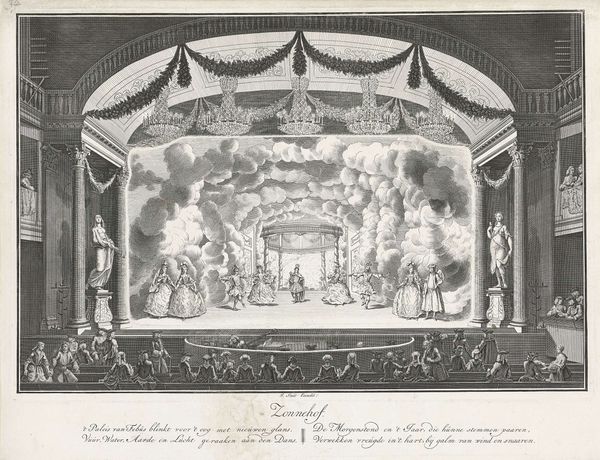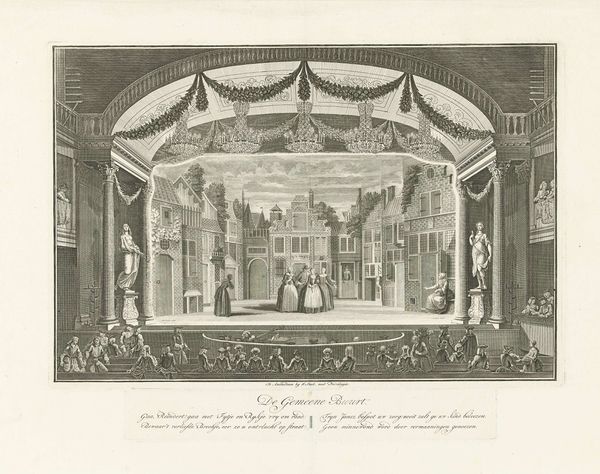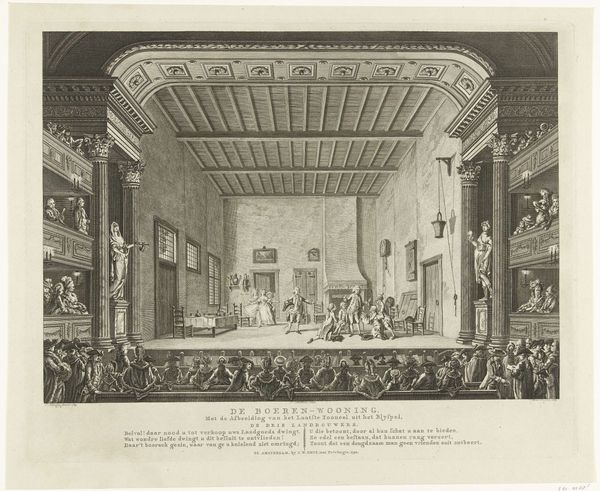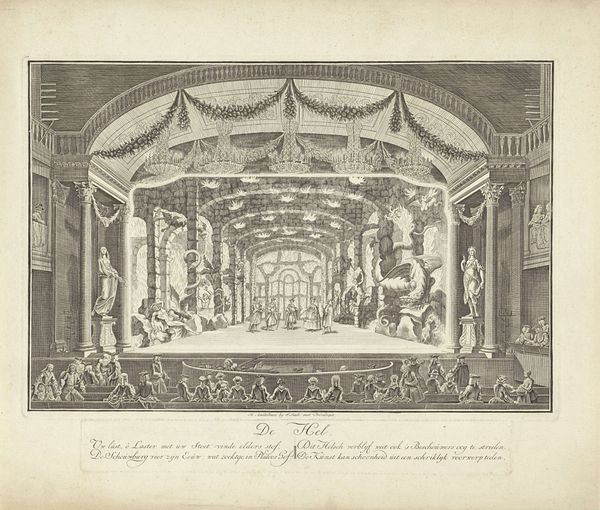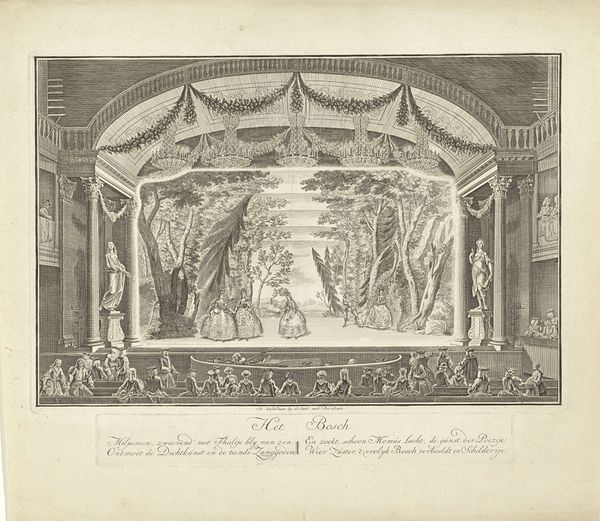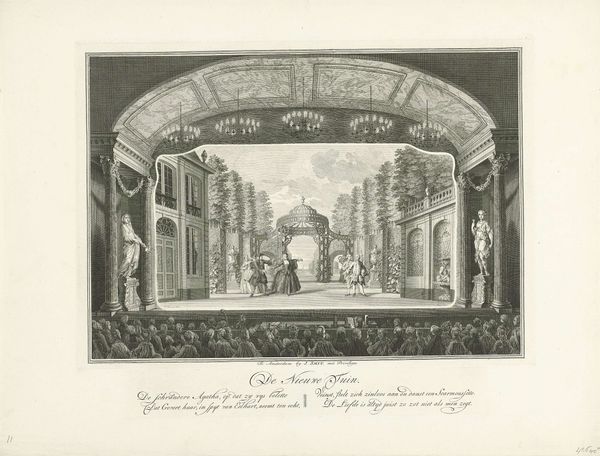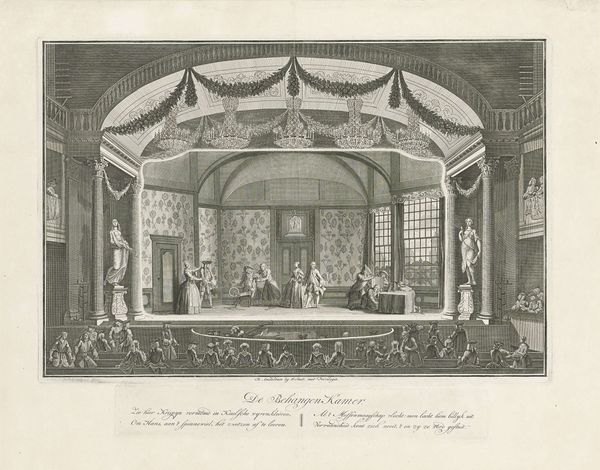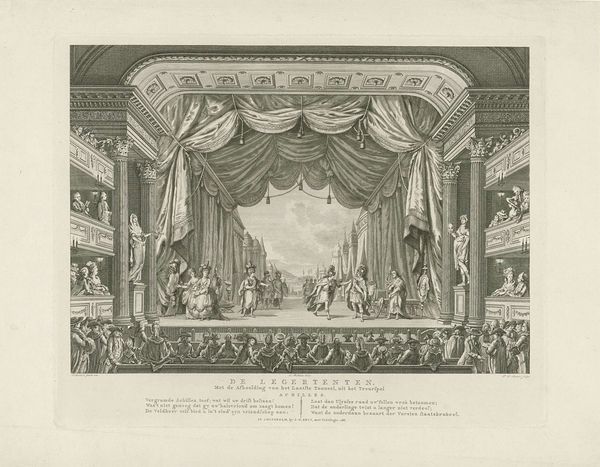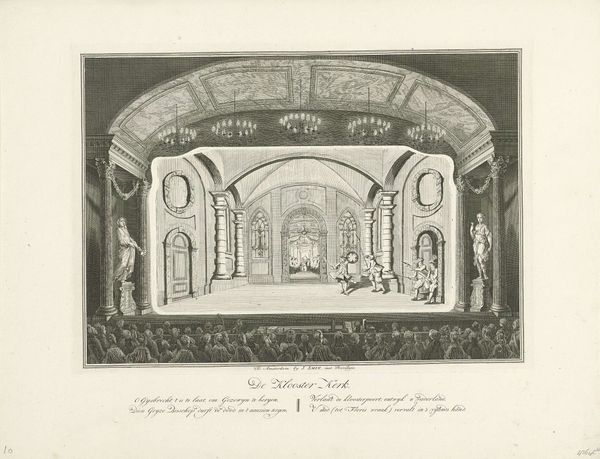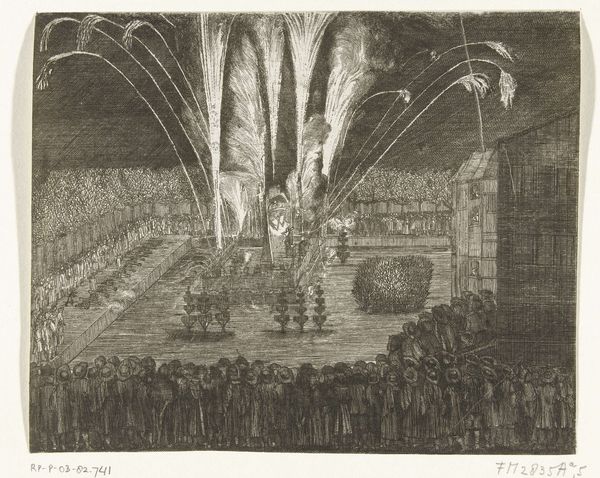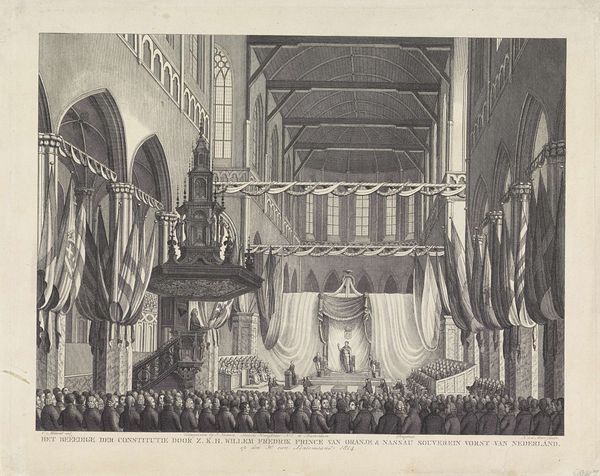
Toneel van de Amsterdamse Schouwburg bij het uitbreken van de brand, 1772 1772
0:00
0:00
Dimensions: height 265 mm, width 350 mm
Copyright: Rijks Museum: Open Domain
Editor: This engraving by Cornelis Bogerts, titled "Scene of the Amsterdam Theater Fire, 1772," depicts the dramatic moment when fire erupted on stage. It's striking how the detailed etching captures the chaos and fear. What kind of context can you give us, viewing this piece through the lens of its public role? Curator: This print offers us insight into the eighteenth-century's fascination with spectacle, particularly disasters. The burning of the Amsterdam theatre was a major event. Bogerts' print, distributed widely, wasn't just a news report. Consider how this image, displayed in homes and print shops, served to construct a collective memory of the event, shaping public opinion and reinforcing moral lessons about the transience of worldly pleasures and perhaps the dangers inherent in public spectacle itself. How does the composition, particularly the contrast between the chaos on stage and the seemingly detached observers in the boxes, contribute to this? Editor: It almost feels staged, like another performance, highlighting that remove you mention. I also notice elements that feel both Baroque and Neoclassical... I wonder if that speaks to tensions of that period, both in life, but also within the Dutch art world? Curator: Precisely. The overall composition has that Baroque drama, but the clean lines in the architecture also nod to Neoclassicism. The print becomes a site of negotiation, aesthetically representing broader cultural shifts. What message did the combination send to contemporary audiences? What type of patron, public, or institution might promote one or the other set of ideologies? It would take additional analysis to parse out exactly how it functions as a historical and cultural record. Editor: Thinking about it that way helps understand it beyond just the immediate visual. Thanks! Curator: Absolutely! It encourages one to ask critical questions about art's function and audience.
Comments
No comments
Be the first to comment and join the conversation on the ultimate creative platform.

